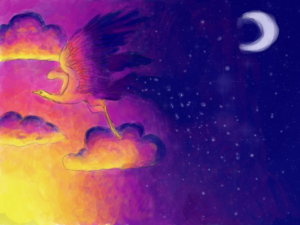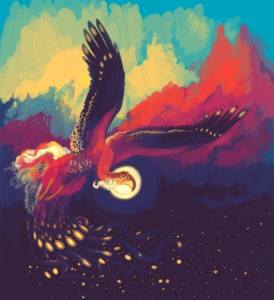How is the culture of art creation on the web different to in the real world? And why is it different? Two of the largest art websites on the internet, deviantArt and pixiv, have over 44 million and over 30 million users respectively. There are a number of reasons for the difference between digital and real-life cultures, the most significant being that art on the web has a much greater population of amateurs and casual artists than in the real-life art world. On the web, most artists started out by drawing their favourite characters as a teenager, whereas in the professional art world, most artists are formally educated and do not become successful until well into adulthood (if they are successful at all). Art on the web is created in a much more social context, has a completely different attitude to criticism, and different art styles and subject matter. It is also self-curated, rather than having to pass through other people’s approval.
Most professional artists, as well as other people in the art world such as curators and art historians, have some level of formal art education. They studied art with the goal of making it a career, and as such they take it very seriously. On the web, however, most artists are amateurs who make art purely as a hobby. That is not to say that there are no hobbyist real-world artists, or that there are no career web artists, but the proportion of professionals to amateur artists is quite different in digital culture versus the real life art world. Many web artists also start drawing and posting their artwork online before they are even teenagers; obviously, for these artists, being a professional artist as a career is not something they are seriously committing to. Also, as hobbyists and, often, children, many artists on the web are simply not as skilled as formally trained adults. This also has an effect on the culture of art creation on the web. The power of the web is that it brings all of these millions of amateur artists together, creating a community and a culture where they might otherwise be sharing their art with their friends and no one else.

Art on the web is very often a social thing. As previously mentioned, the art sites deviantArt and pixiv are incredibly popular; this is because, as well as just sharing artwork, they allow people to comment on and react to each other’s art, and to simply talk to each other about any kind of topic. While they are less popular nowadays, oekaki and paintchat were incredibly popular forms of social art creation in the 00s. An oekaki is essentially a message board with a built-in drawing program, allowing people to post artworks they have created as well as regular text comments. A paintchat is a site where a number of users can all draw in real on the same canvas, as well as talk to each other in text form. Obviously, these are both highly social ways to create art; for many people, the social aspect may have been more important than the art. Peer pressure is also a reason people draw on the internet: if all your friends spend their time drawing their favourite characters, you want to do it as well. This kind of casual, social art creation is unmatched in real life, as it is the web that brings all of these people together.
According to Sturgeon’s Law, 90% of everything is crap, and this is definitely true of art on the web. The prevalence of unskilled, unprofessional artists means that there is a huge amount of really bad art on the web. The 10% of good art is definitely there, but since art on the web is not curated except by the person posting it, the casual viewer sees a lot more bad art than they would in, say, an art gallery. The increased visibility of bad art is part of why art on the web has a different culture to art in the real world. Another difference between the culture of art on the web and art in the real world is the attitude to criticism. In real life, it is completely socially acceptable and sometimes expected to pass judgement on the art you see. Artwork invites criticism just by existing. On the web, in contrast, it is considered very rude to give any criticism unless the creator has explicitly asked for it. This is, again, probably because of the contrast between the mostly professional real-world artists and the mostly amateur web artists. In the real world, as most artists have had some kind of formal art education, it’s the artist’s fault if they make bad art. On the web, however, it’s simply unfair to compare a 12 year old who’s just started drawing to a 25 year old who’s been drawing for years. The fact that art on the web is social is also a factor; critiquing someone’s art unprompted could be seen as a personal attack.
Finally, the style and subject matter of art in real life versus art in web culture are different. Since the late 19th century, the art world has been moving away from depictions of realistic looking people and objects, and more towards art that is about emotions or concepts. For example, art movements such as modernism, abstract art, expressionism, cubism, surrealism, postmodernism, conceptual art, and contemporary art . Art on the web, however, is mostly pictures of things, which are recognisable as those things. While absolute hyperrealism is not necessarily most web artists’ goal (having a distinct art style is desirable), most artists do try to draw at least somewhat realistically. A huge amount of web art is fanart (e.g. Harry Potter fanart would be drawings of characters or scenes from the Harry Potter series), which probably influences this; there is no point drawing your favourite character if no one else recognises that that’s who it’s a picture of!

The cultures around art creation on the web and off are very different. This is for a number of reasons, but the most significant is probably that real world artists are mostly professionals, whereas most web artists are amateurs.
edit: I realised that since I submitted the same text as a word doc on turnitin, it comes up with 96% similarity, because it thinks I’m plagiarising this blog post. This is my (Frances) personal website.